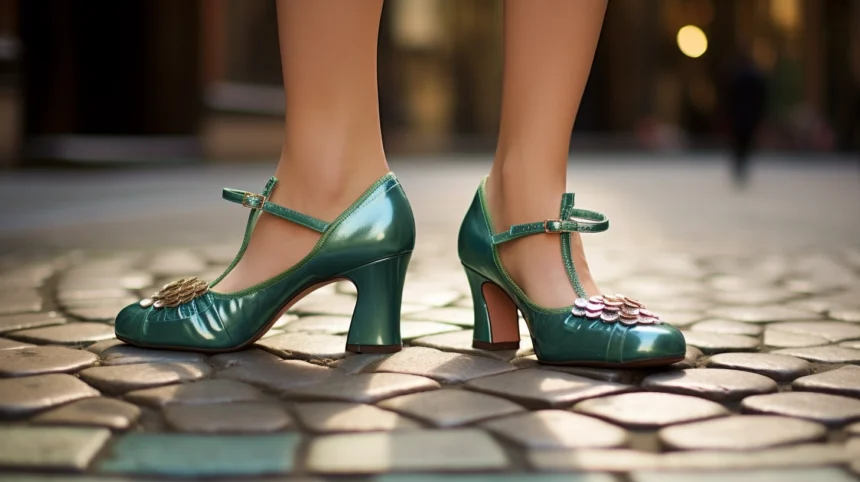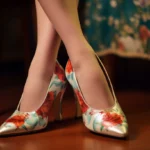The world of fashion is a constantly evolving landscape, where trends come and go, but some elements remain timeless. Among these enduring symbols of style are high heels, a staple of women’s fashion for centuries. This article for TheVintageGuide.com takes you on a nostalgic journey through the evolution of heels, exploring their transformation across different eras and their lasting impact on fashion and culture.
The Birth of Elegance: 15th-17th Century Beginnings
The story of heels begins in the 15th century, rooted in the aristocratic courts of Europe. Originally designed for functionality, to help riders keep their feet in stirrups, heels quickly evolved into symbols of nobility and high status. By the 17th century, heels became an essential part of the aristocratic wardrobe, with both men and women donning these elevated shoes. The iconic red heels of Louis XIV’s court are a testament to the power and prestige associated with high heels during this era.
The 18th Century: A Statement of Sophistication
In the 18th century, heels took on a more decorative role, becoming intricately designed and often adorned with precious materials. This period saw the rise of the French heel, a curved style that added a touch of elegance and femininity. Heels were not just fashion statements but also indicators of social and economic status.
The Roaring 20s: Flappers and Lower Heels
The 1920s marked a dramatic shift in heel design, coinciding with the social changes of the era. As women gained more independence and the flapper culture emerged, heels became lower and more practical, reflecting the active lifestyle of women at the time. This era also saw the introduction of the iconic T-strap heel, a beloved design that still holds a special place in vintage fashion.
The Post-War Era: Stilettos and Sex Appeal
The post-war era of the 1950s brought a renewed focus on femininity and glamour, spearheaded by the emergence of the stiletto heel. These slender, high heels, often reaching impressive heights, symbolized a blend of power and sensuality. Stilettos became synonymous with Hollywood’s golden age, worn by icons like Marilyn Monroe and Audrey Hepburn.
The Swinging 60s and 70s: Platforms and Rebellion
The 1960s and 70s were marked by cultural revolutions, and fashion was no exception. Platform heels became the rage, embodying the era’s spirit of rebellion and freedom. These chunky, towering shoes were not just about adding height; they were a bold statement of individuality and non-conformity.
The 80s and 90s: Power Dressing and Grunge
In the 1980s, heels became a symbol of power in the professional world, with the rise of power dressing. Women in the workforce embraced high heels as a sign of authority and ambition. The 90s, however, brought a stark contrast with the grunge movement, where chunky boots and low heels reflected a more laid-back, rebellious attitude.
The 2000s to Present: A Fusion of Past and Present
Today, heels embody a fusion of past styles and modern innovations. From the revival of vintage designs to the introduction of sustainable materials and ergonomic designs, contemporary heels are a testament to the enduring legacy of this fashion staple.
Louis Conclusion
Heels have come a long way since their inception, evolving from symbols of status to expressions of personal style and empowerment. Each decade’s heel style tells a story of the social, cultural, and fashion trends of the time, making them not just footwear but a historical narrative told through design. As we continue to step forward, the evolution of heels remains a fascinating journey of style, culture, and empowerment.
*Explore more fashion histories and vintage trends at TheVintageGuide.com.*








